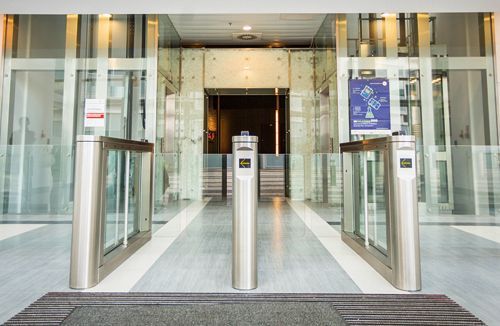What will access control look like in the future? The tenants of Mennica Legacy Tower in Warsaw’s Wola district, which developer Golub GetHouse is planning to complete in Q4 next year, will be among the first in the country to open their doors using their mobile phones. Or, the doors will be opened automatically by the access control system in the building communicating with the smartphone and recognising the person entering. However, this would require additional authorisation from those entering the secure zone. It might be necessary to punch in a PIN number or have your thumb scanned. “Thanks to this you will be able to go though the security gates and the system will automatically call a lift to the floor you usually work on and the phone will tell you which lift to go to,” explains Czarek Jarząbek, the founder and CEO of Golub GetHouse, about the company’s plans. It will also be possible to enter the office using a smartphone and after that adjust the ligh






























































